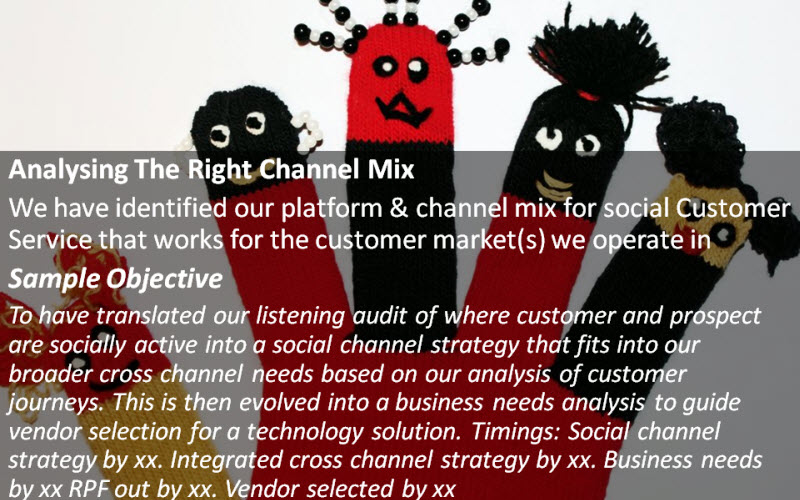
It is a mistake to assume that offering social customer service is just a matter of hooking into Facebook and Twitter. Prior analysis of where your brand is being discussed will have provided a map of where those all important conversations are taking place across the whole social ecosystem.
Once mapped out, there are a number of decisions to be made.
- Will brand responses be strictly limited to service only topics?
- Do we directly engage at the source of commentary such as forums and blogs?
- What are the implications of engaging on platforms that are not owned by the brand. Which can change functionality according to their own priorities?
- Is there a possibility of launching a peer to peer community?
- As the overall shape of social networking matures, how will this affect our channel mix? For instance, what role might messaging apps play or more visual platforms such as Instagram or Pinterest?
- Do leaders such as KLM show the way when launching a 24×7 customer service on Linkedin?
Your channel mix should be based in response to these types of questions. When you are ready to implement, you may prefer to offer a single social channel really well than to spread yourself too thin, too early.
Whatever you end up with, remember that from the customer’s perspective, social is just part of the journey. Signpost the alternatives. Understand when the conversation needs to move between public and private and work hard to make that easy. Invest in a platform that brings strong integration capabilities.
Here is a useful design principle. Your channel mix should evolve based on the suitability of the channel to the task not on whether it is a cheaper option to the organisation. Moreover prioritising the customer need will flow through into organisational benefits.
Keep listening. Keep adapting. Your social channel mix is a moving target as your customers’ own social behaviour evolves.
Other competencies in the framework for social customer service excellence can be accessed in ‘Related Content’.




